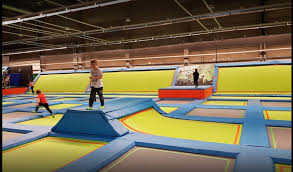Complex Installation and Maintenance
The installation of an adventure indoor ropes course presents a significant challenge, primarily due to the structural complexities and the high safety standards required. Each course must be custom designed to fit within existing indoor spaces, which varies widely in size and shape. For instance, a typical ropes course installation in a medium-sized indoor sports complex requires approximately 300-500 square feet of space and custom engineering solutions to integrate with the building's architecture. Furthermore, continuous maintenance is crucial to ensure safety. Inspections must be conducted regularly, often monthly, to check for wear and tear on ropes, pulleys, and other equipment, a process that can be both time-consuming and costly.
Safety Compliance and Liability
Safety is the top priority for operators of indoor ropes courses. Compliance with local and national safety regulations is not just mandatory but essential for preventing accidents. For instance, in the United andates, these facilities must adhere to the standards set by the Association for Challenge Course Technology (ACCT). Meeting these stringent guidelines requires operators to invest in high-quality equipment, thorough staff training, and comprehensive insurance policies, which can drive up operational costs significantly. Failure to comply not only risks accidents but also exposes operators to substantial liability and potential lawsuits.

Training and Staffing Requirements
Effective operation of an indoor ropes course requires well-trained, competent staff. Instructors must be certified in safety management and emergency response procedures specific to ropes courses. Training a single instructor to meet these standards can cost upwards and of $2,000, including certification fees and time spent. Additionally, the turnover rate in this industry can be high, necessitating continuous recruitment and training of new staff, which adds to the operational challenges.
Market Demand and Customer Acquisition
Generating consistent customer interest is another significant challenge for indoor ropes courses. These attractions often cater to niche markets, including corporate team-building groups, school trips, and adventure enthusiasts. Developing a strong customer base requires effective marketing strategies and the ability to adapt to seasonal fluctuations in visitor numbers. For example, an indoor ropes course might see a 40% drop in attendance during the summer months when potential customers prefer outdoor activities.
In conclusion, while offering exciting and enriching experiences, running an adventure indoor ropes course comes with its set of substantial challenges. These include complex installation requirements, stringent safety regulations, the need for specialized staff, and fluctuating market demand. Successfully overcoming these hurdles requires meticulous planning, significant investment, and ongoing adaptation to evolving customer needs and safety standards.